Advancing Innovation in Dermatology is pleased to make available our collection of scholar articles, industry news, and interviews with the professionals accelerating innovation in skin health and patient care. This content is yet another way beyond our in-person and virtual events to strengthen the community of innovators we aim to build and maintain.
The Itch-Scratch Cycle: An Interview with Brian S. Kim, MD, MTR, FAAD
Dr. Kim is the Sol & Clara Kest Professor of Dermatology, Vice Chair of Research at the Icahn School of Medicine at Mount Sinai, Site Chair Mount Sinai West and Morningside, and Director of the Dr. Mark Lebwohl Center for Neuroinflammation & Sensation.
William Ju, MD, FAAD: Could you please give us an overview of the itch-scratch cycle?
Brian Kim, MD, MTR, FAAD: One classical definition of itch is that it is a sensation that causes the desire to scratch. A hypothesis is that scratching of an itch evolved in mammals as a protective behavior to remove harmful insects and parasites. However, when this pairing of itch and scratch goes awry, it becomes harmful. For example, in a number of inflammatory skin diseases, a vicious cycle can occur with pruritus leading to scratching, which in turn leads to more itching and then more scratching. This results in more severe pruritus, worsening skin lesions, and significant impairments in quality of life, all of which can become chronic.
Dr. Ju: Do itch and scratch interact differently depending on the specific disease?
Dr. Kim: Yes. The interaction of itch and scratch can vary in different diseases. For example, in atopic dermatitis, the pruritus induces scratching behavior, which can lead to skin excoriations and infections. In contrast, in prurigo nodularis, the cutaneous response to scratching from itch is nodules, where the clinical morphology and histopathology are quite distinct from that of atopic dermatitis.
Dr. Ju: How do reflex circuits and behavior play a role in the itch-scratch cycle?
Dr. Kim: Scratching, in addition to being an efferent arm reflex to afferent signals generated locally in the skin, can also have a substantial central nervous system component.
This is an important area of research. For example, in atopic dermatitis, itch and scratch as a behavior or as a reflex can be quite different while awake versus when asleep. Another example is Morgellons disease, where many patients report that it is not sensations of itch that drive them to scratch.
Dr. Ju: How can we further advance our treatments in alleviating itch and scratching?
Dr. Kim: Translating recent discoveries in science and engineering are leading to novel approaches and breakthrough products. For example, basic biology research created a foundation for the development of anti-IL-4Rα antibodies and small molecule JAK inhibitors that have been approved by regulatory authorities for treating moderate to severe atopic dermatitis. These therapies significantly reduce itch symptoms. For prurigo nodularis, anti-IL-31 receptor antibodies and anti-IL-4Rα antibodies have shown efficacy in reducing pruritus in clinical trials. In fact, dupilumab was just approved by the FDA for the treatment of prurigo nodularis.
On the engineering side, technology innovations in devices and informatics provide powerful new ways to digitally measure and analyze scratch parameters and behavior. Recent advances include combining machine-learning interpretation with data from devices such as wrist-worn actigraphs, small acousto-mechanic skin sensors, and the contactless monitoring of radio waves. These are allowing for the characterization of scratch in more thorough ways, both with respect to it as an isolated behavior and also how scratch can interact and interfere with important physiological states, such as sleep.
I should note that these examples can be considered early harbingers of additional exciting and impactful advances that are to come. These include more deeply and broadly understanding the biological complexities in the itch-scratch cycle, meaningfully measuring its components, and developing innovative ways to effectively interrupt and treat it.
On Tuesday, November 1, during a Dermatology Innovation Webinar experts will discuss how recent fundamental advances in neurobiology, neuroimmunology, and artificial intelligence have informed fundamental mechanisms, characteristics, and new treatments for patients with chronic pruritus.

Advancing Innovation in Dermatology Inc. is a nonprofit, tax-exempt charitable organization under Section 501(c)(3) of the Internal Revenue Code.
Donations are tax-deductible as allowed by law. | Privacy Policy | Cookie Policy
© 2025 Advancing Innovation in Dermatology Inc.. All Rights Reserved. | Web Design & Development time4design - Bucks County Web Design.